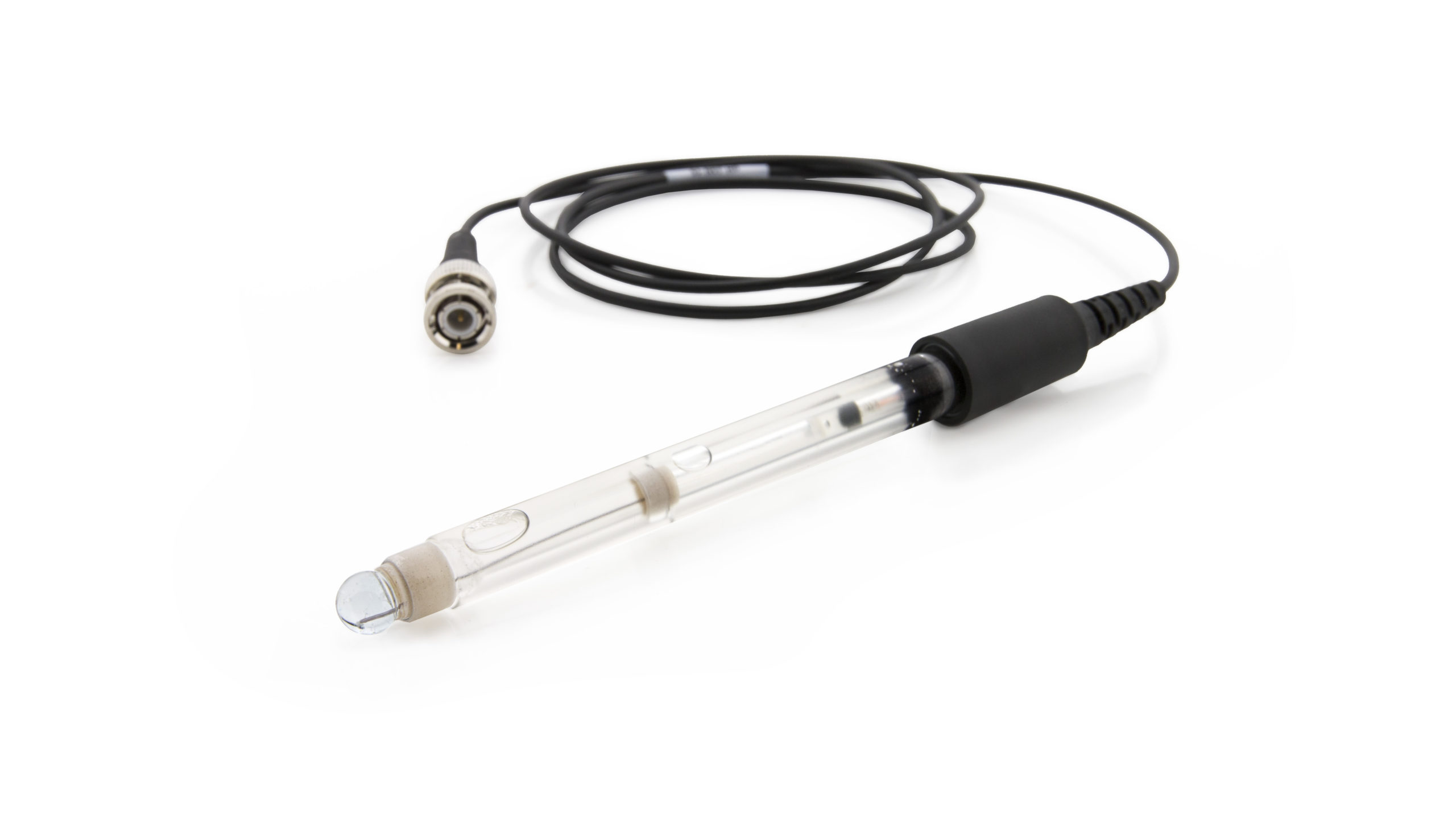Glass-Body pH Electrode BNC (GPH-BNC )

Proper Set-Up
- Remove the storage bottle from the electrode by first unscrewing the lid and then removing the bottle and lid. Thoroughly rinse the lower section of the probe, especially around the bulb-shaped tip, using distilled or deionized water.
- Connect the electrode to one of the Vernier electrode amplifiers.* Push the BNC connector of the electrode cable onto the connector on the amplifier, then turn the BNC connector about one-half turn clockwise. It should lock tight.
- Connect the amplifier to your lab interface and run data-collection software.
- Readings can be displayed in pH or mV. Choose the desired unit before collecting data.
* Electrode Amplifier is required but not included: Electrode Amplifier (
Troubleshooting
- Primary Test: Does it read approximately 4 in its storage solution? Note: A reading of 13 to 14 indicates 0 volts and might mean that the sensor is defective or damaged.
- Secondary Test: Take readings in fresh buffers, NOT distilled water! If no buffers are available, try it in vinegar (~ pH 2.5-3.5) and ammonia (~ pH 10.5-11.5). If readings do not change when the sensor is placed in different solutions, the sensor is possibly defective or damaged.
Additional Troubleshooting
OPERATION
- The pH electrode I have been using no longer seems to work or is slow to respond. Is there anything I can do to fix it?
- My pH probe does not give an accurate reading. What should I do?
- Why doesn't my pH Sensor read pH 7 in distilled or deionized water?
- Will I get interference when I put two sensors in the same solution?
- What type of liquids cause problems for the pH Sensor?
- The liquid inside my pH Sensor is low or gone. Will it still work?
CALIBRATION
- How do I calibrate my sensor?
- Where do I get pH buffer solutions?
- During calibration, what are the typical potential output readings for the PH-BNC electrode?
MAINTENANCE and STORAGE
- Where do I get pH or ORP Storage Solution? (Buffer Storage Solution)
- What do I do about mold growth in my bottle of pH electrode storage solution?
- How can I keep my pH or ORP storage solution from spilling when the sensor is in use?
- My pH sensors were stored dry. Will they still work?
- What is the best way to clean the glass bulb of the pH electrode?
- Do any of your sensors require special storage?
- I bought your pH buffer capsules. Can I make storage solution for my pH Sensors with this kit?
- How do I dispose of my pH sensor?
Specifications
- Electrode Type: Sealed combination electrode with Ag/AgCl reference
- Shaft material: glass
- Range: pH 0–14
- Accuracy: ±0.2
⚬ ±0.2 pH units (factory calibration)
⚬ ±0.05 pH units (user calibration) - Response time:
⚬ 2 s (to 90% of full reading in aqueous buffer)
⚬ 5 s (to 90% of full reading in 50% acetonitrile) - Storage solution: pH 4/KCl solution (10 g KCl in 100 mL buffer pH-4 solution)
- Dimensions
⚬ Shaft diameter: 12 mm OD
⚬ Cable: 1 meter coaxial cable with BNC connector
Calibration
Calibrate? Usually no. However, for the most accurate measurements with this sensor, we recommend calibration. It is a simple process that only takes a few minutes. Custom calibrations can also be stored directly onto the sensor.
- For calibration instructions, see: How do I calibrate my sensor?
- To save a calibration to a particular sensor, see: How do I save a custom calibration to my pH sensor?
- Where do I get pH buffer solutions?
Typical Calibration Voltages
⚬ In pH 4 buffer: ~1.56 V
⚬ In pH 7 buffer: ~1.19 V
⚬ In pH 10 buffer: ~0.82 V
Related Products
- Electrode Amplifier (
EA-BTA ) - Electrode Support (
ESUP ) - Microstirrer (
MSTIR ) - Stir Station (
STIR ) - Drop Counter (
VDC-BTD ) - Precision Volume Dispenser (
DC-DISP ) - Go Direct® Glass-Body pH Sensor (
GDX-GPH )
Replacement/Maintenance Parts
- pH Buffer Capsule Kit (
PH-BUFCAP ) - pH Storage Solution (
PH-SS ) (500 mL bottle) - Storage Solution Bottles (5) (
BTL )
